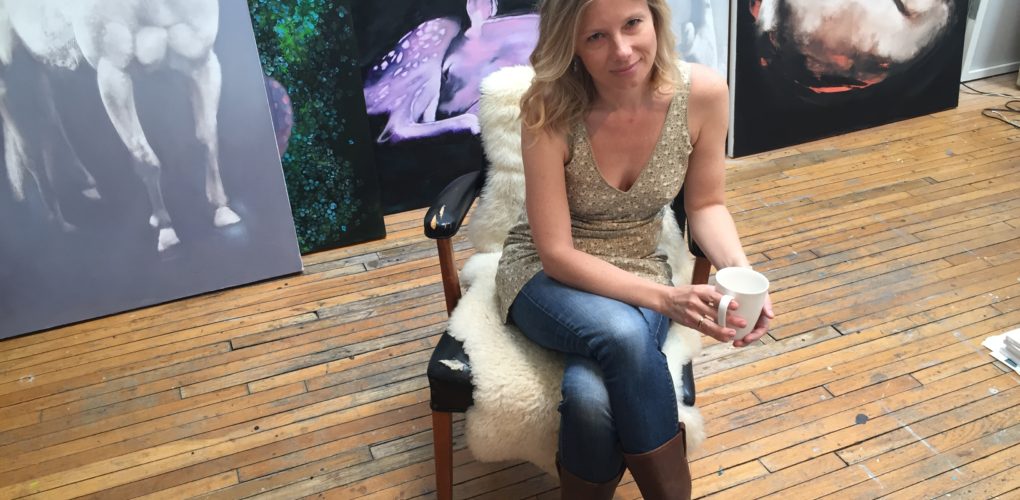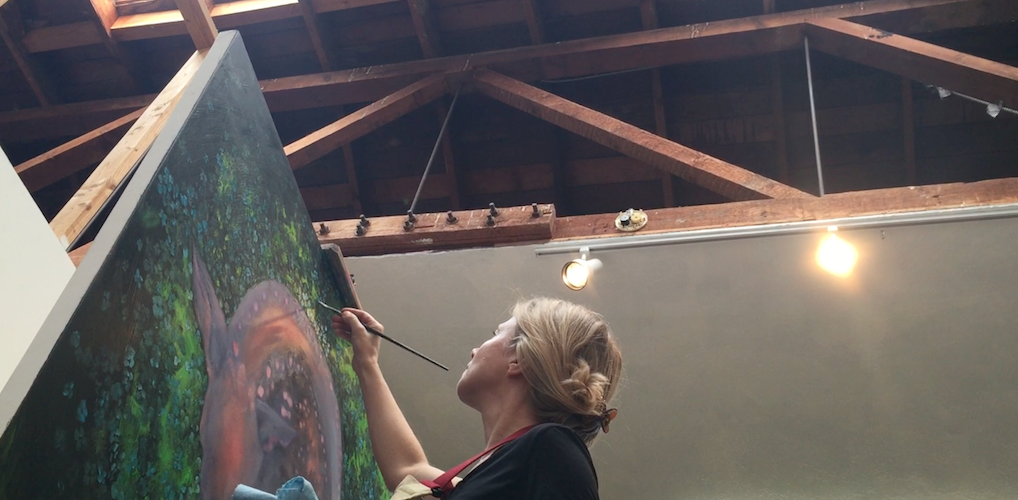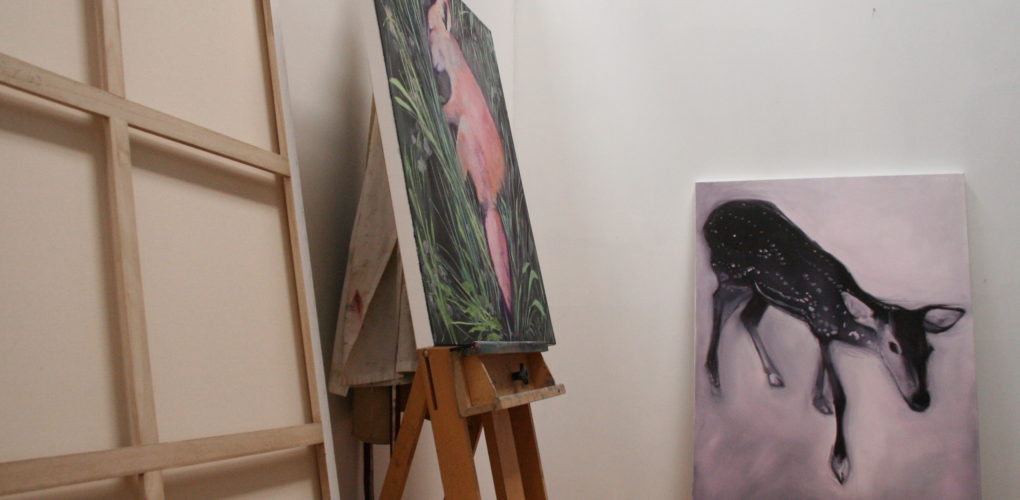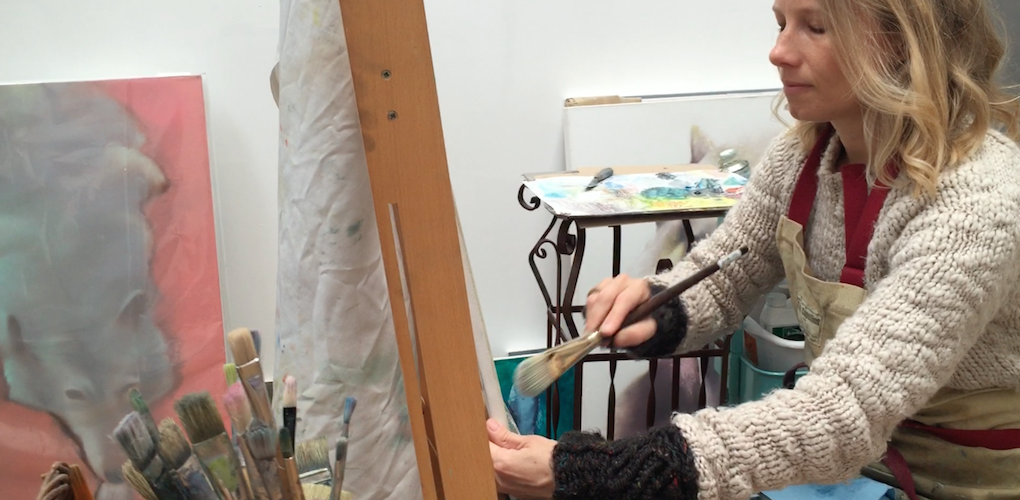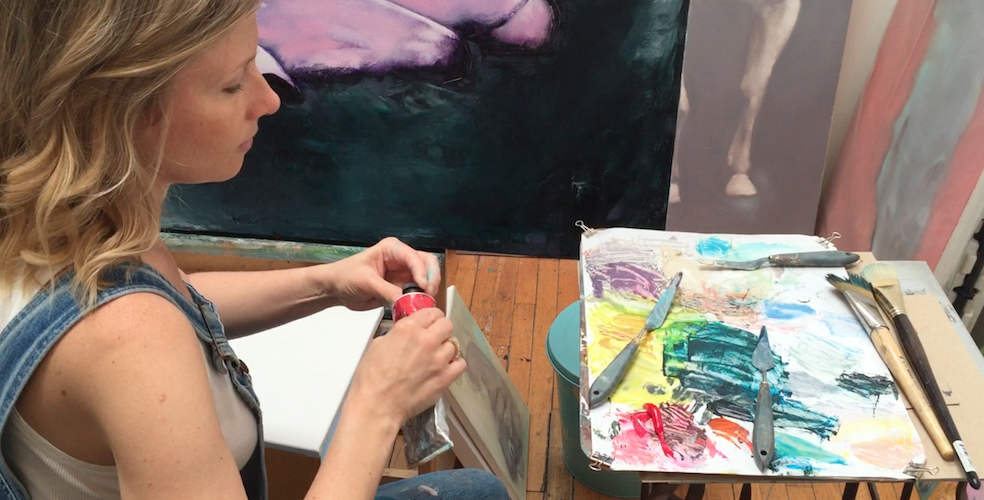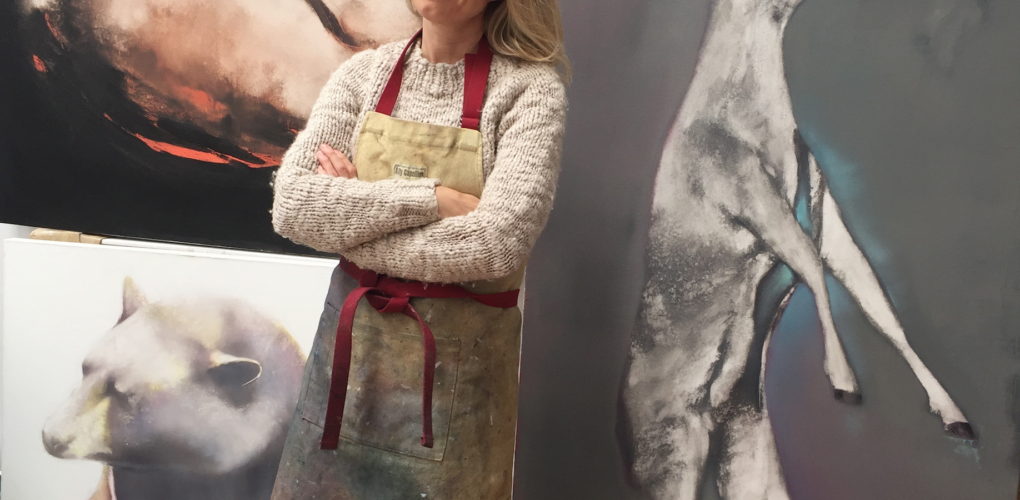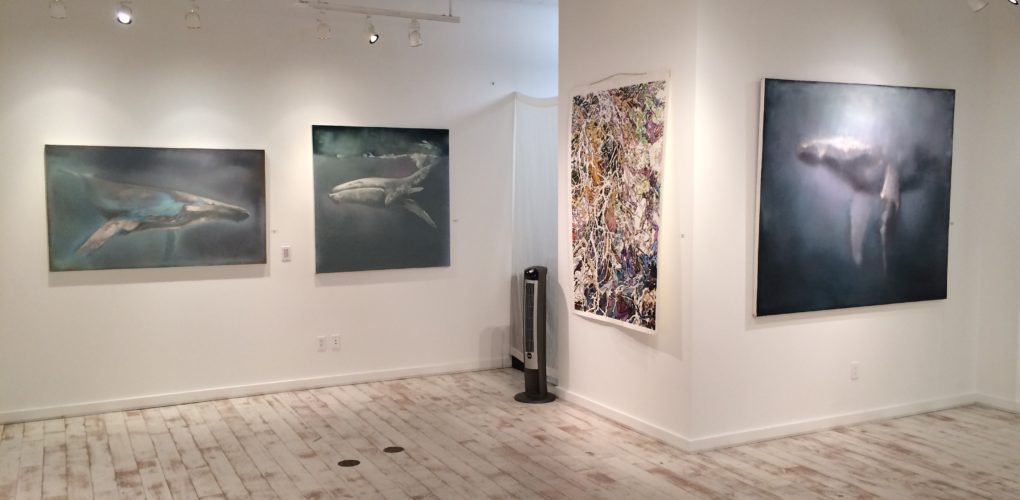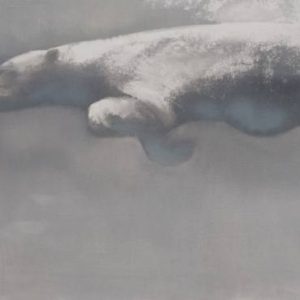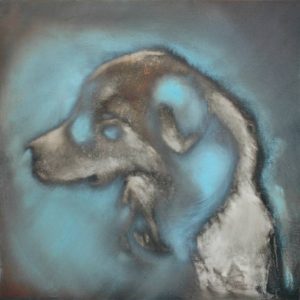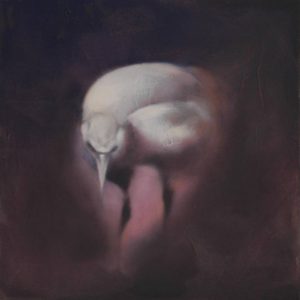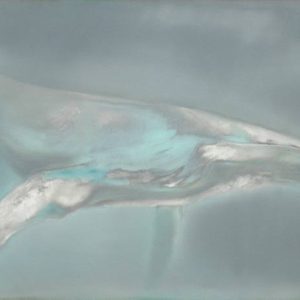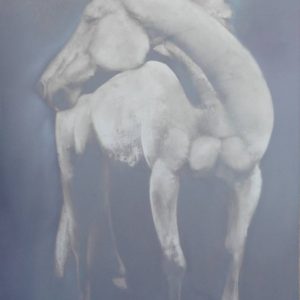Inside the Studio
 Kim Kimbro’s animals are a conduit to empathy
Kim Kimbro’s animals are a conduit to empathy
What are the major themes you pursue in your work?
I tend to circle around the themes of loss, death, pain, and transformation. Using animals as my primary subject matter is a language that is instantly legible to everyone – they provide a very natural conduit to empathy. I approach the content of my work in a more structural way, rather than through narrative. By that I mean the compositional presentation tends to be somewhat frontal or formal, even. I try for this misleadingly exposing effect, while actually withholding. The intellectual and emotional content is marinated deep in there on a sub-particle level rather than wearing it on its sleeve. It’s sort of the opposite of oversharing. It’s more fun to not leave a trail of breadcrumbs.
What was the best advice given to you as an artist?
Stay light on your feet. The magic usually happens at the beginning of the painting, while you’re still groping in the dark. Once you know where you are in the painting it’s very easy to turn on the cruise control, which is never a place I want to be. Learn how to recognize and preserve those early surprises and flourishes at all costs because they contain the energy that the rest of the painting will hinge upon.
Prefer to work with music or in silence?
I know it’s weird, but silence. I need all my wits about me, showing up with a full arsenal of senses and a clear head. Music would add yet another filter of distraction – as if there isn’t already enough of that already!
If you could only have one piece of art in your life, what would it be?
A painting entitled “The Burnt” by Los Angeles-based painter Enrique Martinez Celaya. There is a blackened figure, draped in a too-large coat, standing amongst a few spindly birch trees with the most achingly beautiful snow falling around him. These eyes just stare out at the viewer, sort of stunned or in shock. It kills me.
Who are your favorite writers?
Oh for sure, the Romantics! Both British and American. Give me the Brontes, Emerson, Whitman, Dickinson, Melville, Byron, Blake, Austen, Shelley. I love all their preoccupations with idiosyncratic characters, freedom from tyranny, their regard for nature as as extension of – or even a vehicle for – the human spirit. The willingness to be stormy or extreme or flamboyant… the full embrace of authenticity even if it’s melancholy or gruesome.
